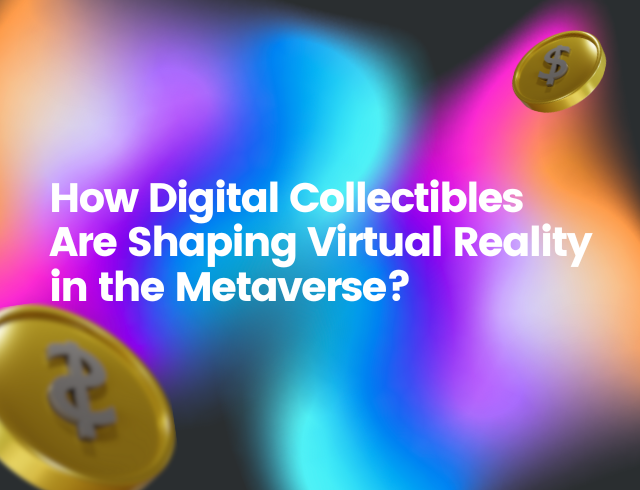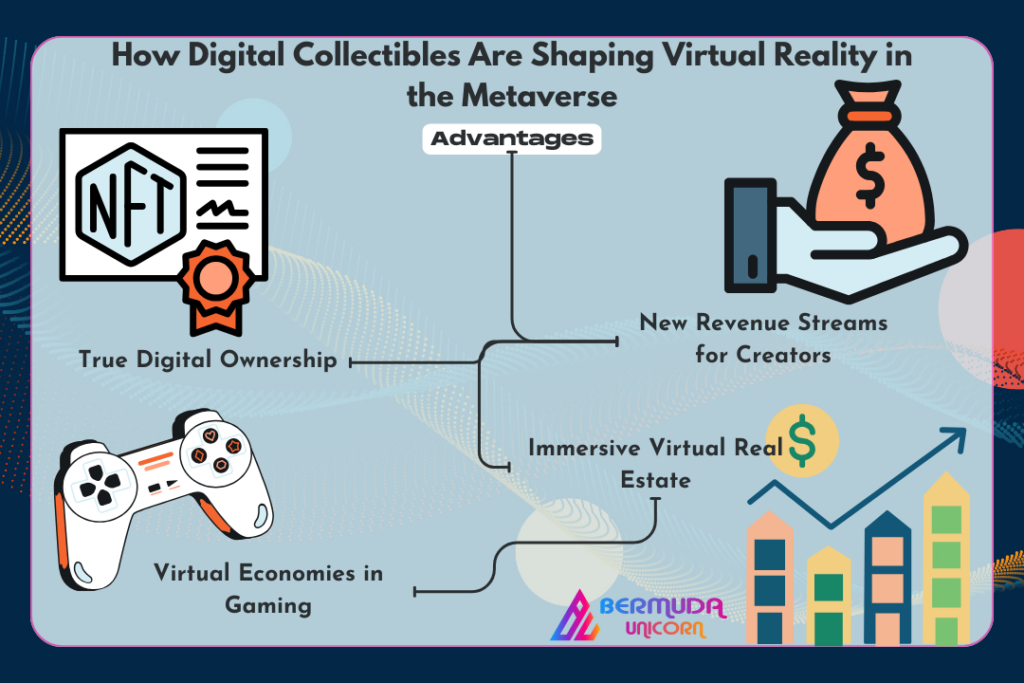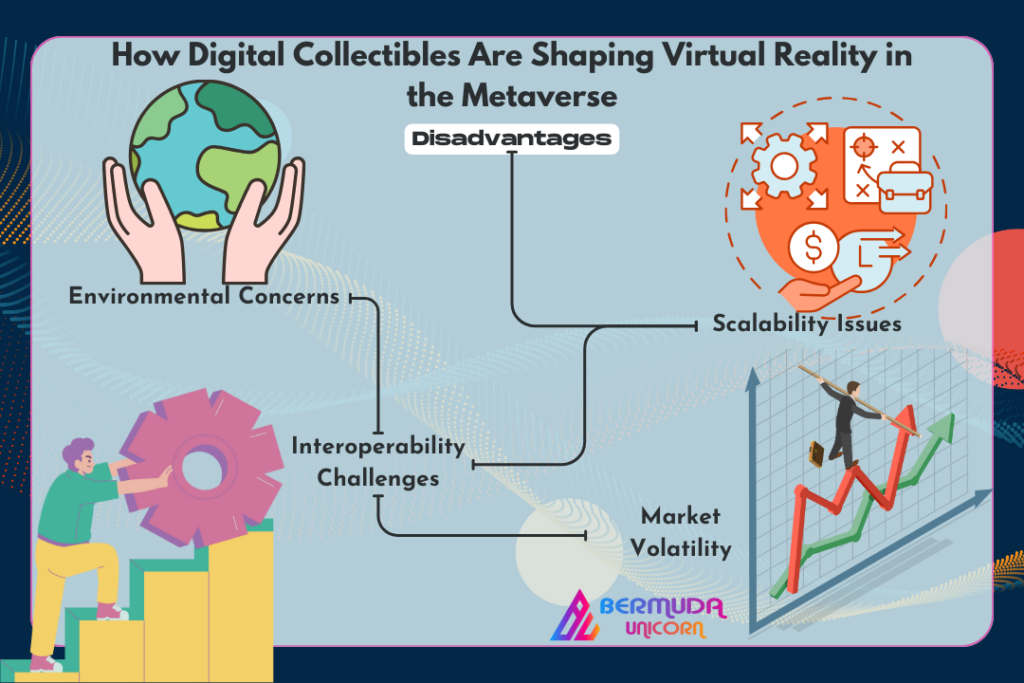![]()

Introduction
In the ever-evolving landscape of technology, the concept of the metaverse has taken center stage. Also, it promises a digital realm where users can interact, create, and engage in ways previously unimaginable. As we traverse this virtual frontier, one phenomenon stands out as a transformative force: digital collectibles. These unique, blockchain-backed assets are not only revolutionizing the way we perceive ownership in the digital space but are also playing a pivotal role in shaping the very fabric of the metaverse.
The Rise of Digital Collectibles
Digital collectibles, often referred to as NFTs (Non-Fungible Tokens), have witnessed an unprecedented surge in popularity over the past few years. These blockchain-based tokens provide a way to verify ownership and authenticity of digital assets, be it artwork, music, or virtual real estate. This newfound ability to establish true ownership in the digital realm has given rise to a thriving market for digital collectibles.
Virtual Real Estate and Beyond
One of the most fascinating applications of digital collectibles is in the realm of virtual real estate. In the metaverse, users can buy, sell, and trade parcels of virtual land. Also, each with its unique attributes and potential for development. The ownership of these digital plots is often represented by NFTs, allowing users to truly own a piece of the virtual world. This has sparked a new wave of digital entrepreneurship, with users investing in and developing their virtual properties.
Art and Creativity Unleashed
The art world has experienced a paradigm shift with the advent of digital collectibles. Artists are now able to tokenize their creations, turning them into unique, ownable assets. This not only provides a new revenue stream for creators but also democratizes the art market by enabling direct interaction between artists and collectors. Digital art marketplaces, powered by blockchain, have become bustling hubs where users can discover, purchase, and trade digital artworks, all while enjoying the immersive experience of the metaverse.
Advantages
Digital collectibles, represented by NFTs, provide a secure and verifiable way for users to claim true ownership of their virtual assets. This eliminates the risk of unauthorized duplication or replication, ensuring that the value of the digital collectible is preserved.
Artists, musicians, and content creators can directly tokenize and sell their work as digital collectibles, opening up new revenue streams. This decentralizes the traditional art market and allows creators to connect directly with their audience, fostering a more inclusive and diverse creative ecosystem.

The integration of digital collectibles into gaming creates vibrant player-driven economies. Gamers can buy, sell, and trade in-game assets with real-world value, enhancing the gaming experience and providing opportunities for players to earn income through their virtual endeavors.
Virtual real estate, represented by digital collectibles, allows users to invest in and develop their own virtual properties. This not only serves as a unique form of digital investment but also fosters creativity as users build and customize their virtual spaces.
Disadvantages
The blockchain technology used for digital collectibles, particularly in the form of Proof-of-Work consensus algorithms, has raised environmental concerns due to its energy consumption. As the demand for digital collectibles grows, there is a need to explore more sustainable blockchain solutions.
2. Scalability Issues:
Current blockchain infrastructure faces challenges related to scalability, leading to slow transaction speeds and high fees during periods of high demand. This can hinder the seamless user experience and widespread adoption of digital collectibles.

3. Interoperability Challenges:
Different virtual worlds and platforms may have their own standards for digital collectibles, leading to interoperability challenges. Users may face difficulties in transferring assets between different metaverse environments, limiting the fluidity of the metaverse experience.
The market for digital collectibles can be volatile, with prices subject to rapid fluctuations. This volatility poses risks for investors and collectors who may experience sudden changes in the value of their digital assets.
Conclusion
The metamorphosis of the metaverse is underway, driven by the transformative power of digital collectibles. As we navigate this virtual landscape, the fusion of blockchain technology, digital ownership, and creative expression is reshaping how we perceive and engage with the digital realm. The future promises an interconnected metaverse where users can seamlessly traverse between virtual worlds, fueled by the ownership and trade of digital collectibles. The journey has just begun, and the possibilities are as vast as the virtual horizons that unfold before us.
FAQs (Frequently Asked Questions))
1. What are digital collectibles?
Digital collectibles are unique digital assets, often called Non-Fungible Tokens (NFTs), that use blockchain technology for ownership and authenticity.
2. How do I buy and sell digital collectibles?
You need a digital wallet that supports blockchain transactions. NFT marketplaces like OpenSea or Rarible facilitate trading. List your digital collectibles for sale, and buyers can use cryptocurrency for purchases.
3. Are digital collectibles only for art?
No, they extend beyond art to virtual real estate, gaming assets, music, and virtual goods in the metaverse. NFTs can tokenize a broad range of digital assets.
4. What challenges does the metaverse face?
Challenges include blockchain scalability issues, causing slow transactions and high fees during peak times. There are also concerns about the environmental impact of certain blockchain technologies.
5. How can I secure my digital collectibles?
Secure your digital collectibles by safeguarding your wallet’s private keys. Use reputable NFT marketplaces, secure login credentials, and stay informed about potential security risks in the blockchain space, such as scams or vulnerabilities.
